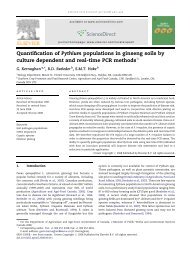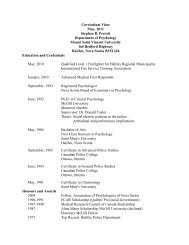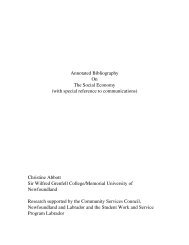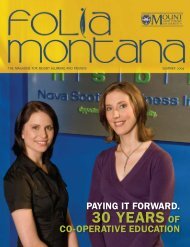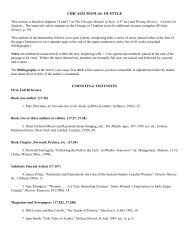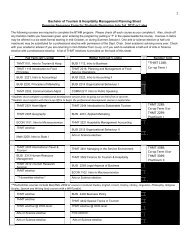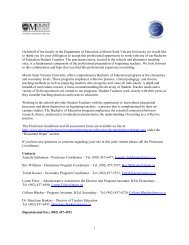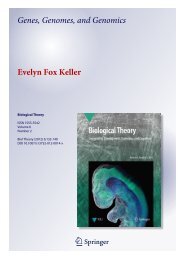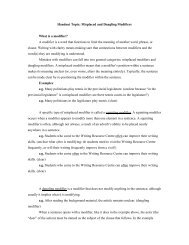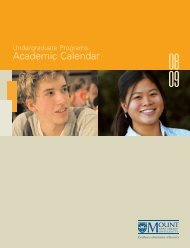FOLIA MONTANA SUMMER 07 - Mount Saint Vincent University
FOLIA MONTANA SUMMER 07 - Mount Saint Vincent University
FOLIA MONTANA SUMMER 07 - Mount Saint Vincent University
Create successful ePaper yourself
Turn your PDF publications into a flip-book with our unique Google optimized e-Paper software.
SIMergency to<br />
the Rescue<br />
It seems more and more we hear stories<br />
of large-scale emergencies that involve a<br />
multi-tiered response. Training the men<br />
and women who face the daunting task of<br />
combating these disasters can be<br />
complicated. And more often than not,<br />
it’s the decision-making process that can<br />
mean the difference.<br />
Dr. Andrew Manning, Associate Professor<br />
of Education and head of the Technology<br />
Learning Research Centre at MSVU, has<br />
created a simulation designed to help<br />
firefighters and paramedics experience<br />
what it is like to assume the role of<br />
incident or medical commander and to<br />
learn from that experience. This is the<br />
SIMergency Project. The software<br />
simulation was developed by Manning<br />
and his team, with input from the City of<br />
Brampton, Ontario’s Fire and Emergency<br />
Services and Nova Scotia’s Emergency<br />
Medical Care.<br />
Responders engage in a real-world<br />
situation where their decision-making<br />
skills are continuously tested. Manning<br />
based his research on a subject of<br />
particular interest to him – social<br />
learning.<br />
“People don’t just learn from books, they<br />
learn from observing and working with<br />
others,” he says. “I wanted to see how we<br />
can learn from others in a more<br />
systematic way.”<br />
The current prototype places firefighters<br />
and paramedics at the scene of a fire<br />
burning through a three-storey rooming<br />
house. The software is reactive to the<br />
decisions that the incident commander<br />
makes and allows for input that changes<br />
the way the fire progresses through the<br />
house. “You can change the direction of<br />
the wind, or change the amount and<br />
type of flammable material in the room,”<br />
he explains.<br />
SIMergency was awarded $2.1 million<br />
under ACOA’s Atlantic Innovation Fund.<br />
The Fund is designed to strengthen<br />
Atlantic Canada’s economy by increasing<br />
the region’s capacity to carry out leadingedge<br />
R&D that contributes directly to the<br />
development of new technology-based<br />
economic activity.<br />
The project’s technology partners are<br />
Sierra Systems and the New Brunswick<br />
Community College – Bathurst.<br />
The software has the potential to expand<br />
into simulations of many other complex<br />
catastrophes, further enhancing the skills<br />
of those involved.<br />
“The fact that this can be online allows<br />
participants to be anywhere. Then, they<br />
can debrief on what went well and what<br />
can be improved,” says Manning.<br />
The prototype of SIMergency debuted last<br />
August at the Fire Rescue Canada Training<br />
and Education Symposium in Halifax. Fire<br />
chiefs, firefighters and first responders<br />
from across the country provided valuable<br />
and overwhelmingly positive feedback to<br />
the researchers.<br />
A video about the simulation can be<br />
viewed on YouTube (www.youtube.com).<br />
Continued....<br />
FEATURE STORY<br />
Dr. Andrew Manning, Associate Professor of Education and head of the Technology Learning Research Centre at MSVU<br />
Folia Montana 9



